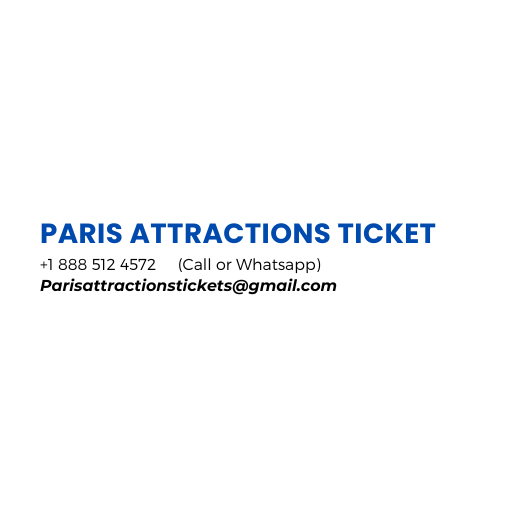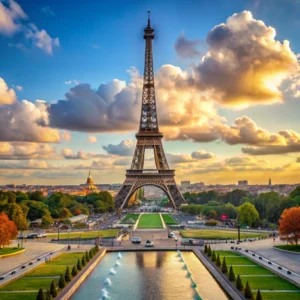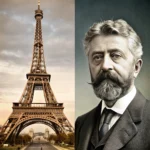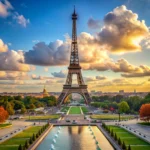The Eiffel Tower is one of the most famous landmarks in the world, attracting millions of visitors every year. But with such popularity comes the challenge of finding the best time to visit. Whether you’re hoping to avoid crowds, enjoy breathtaking views, or capture stunning photos, knowing the best times to visit the Eiffel Tower can make all the difference. In this guide, we’ll explore the ideal times to visit, tips for planning your trip, and answer some of the most common questions visitors ask.
Best Time of Day to Visit the Eiffel Tower
When planning your trip to the Eiffel Tower, the time of day plays a major role in shaping your experience. Whether you’re looking to beat the crowds or enjoy a specific view of Paris, there are certain times of day that stand out for various reasons.
Early Morning: The Quietest Time to Visit
The Eiffel Tower opens its gates at 9:00 AM, and visiting early in the morning is one of the best ways to avoid crowds. By arriving as soon as the tower opens, you’ll have a peaceful experience and the chance to explore the tower without the rush of tourists. Additionally, the early morning light offers a soft glow for beautiful photos of the Eiffel Tower and Paris from above.
Why Early Morning is Ideal:
- Fewer crowds: You’ll experience less congestion and wait times, especially at the elevator.
- Stunning sunrise views: If you arrive at sunrise, you can watch the city come to life as the first rays of sunlight hit the Eiffel Tower.
- Cooler weather: If you’re visiting in the summer, early mornings are cooler and more comfortable.
Late Afternoon: Ideal for Sunset Views
If you want to experience the Eiffel Tower in a different light, visiting in the late afternoon or early evening can provide a magical atmosphere. During this time, the city starts to glow, and you can catch the stunning sunset over Paris. From the second level or the summit, you can witness the transition from day to night, with the Eiffel Tower’s sparkling lights illuminating the sky.
Why Late Afternoon is Ideal:
- Stunning sunset views: As the sun sets, the views of Paris become even more spectacular.
- Golden hour photos: The soft lighting during the golden hour (the hour before sunset) makes for the best photo opportunities.
- Sparkling Eiffel Tower: The Eiffel Tower sparkles every hour on the hour after sunset for five minutes, which is an unforgettable sight.
Evening: Experience the Eiffel Tower’s Nighttime Beauty
Visiting the Eiffel Tower in the evening, after the sun sets, gives you a completely different experience. At night, the Eiffel Tower is beautifully lit up and sparkles every hour. The view from the tower at night is magical, as you can see the twinkling lights of Paris spread out beneath you.
Why Evening is Ideal:
- Nighttime magic: The Eiffel Tower is illuminated at night, creating a stunning view from the top.
- Fewer visitors: While still a popular time, the tower is generally less crowded in the evening compared to midday.
- Sparkling Eiffel Tower: After sunset, the tower sparkles every hour on the hour, a perfect opportunity for photos.
Best Time of Year to Visit the Eiffel Tower
The time of year you visit the Eiffel Tower can have a significant impact on your experience. Paris attracts tourists year-round, but some seasons offer better weather, fewer crowds, and lower prices.
Spring (March to May): Perfect for Beautiful Weather and Fewer Crowds
Spring is one of the best times to visit the Eiffel Tower. The weather in Paris is mild, the flowers are in full bloom, and the city feels fresh and vibrant. While there may still be some tourists, spring generally offers fewer crowds than the summer months.
Why Spring is Ideal:
- Pleasant weather: Mild temperatures and less rain make spring perfect for outdoor exploration.
- Beautiful blooms: Gardens around the Eiffel Tower, including the Champ de Mars, look stunning in the spring.
- Fewer tourists: Spring is before the peak summer season, so you’ll experience fewer crowds.
Fall (September to November): Enjoy Fall Colors and Fewer Tourists
Fall is another great time to visit the Eiffel Tower. The weather is still pleasant, and the fall foliage in Paris adds to the beauty of the city. The crowds begin to thin out after the summer rush, and you can enjoy a more relaxed visit.
Why Fall is Ideal:
- Mild weather: The temperatures are still warm, but the summer heat has faded.
- Fall colors: The trees around the Eiffel Tower and throughout Paris turn vibrant shades of red and orange.
- Fewer tourists: With the summer season over, you can enjoy the tower with fewer visitors.
Summer (June to August): High Demand and Long Lines
While summer is the most popular time to visit Paris and the Eiffel Tower, it also comes with some drawbacks. The city is crowded, and the wait times for tickets and elevators are often long. However, summer also offers long days, which means more daylight hours to enjoy the views.
Why Summer is Ideal:
- Long days: You’ll have plenty of daylight hours to experience the tower and the views of Paris.
- Festive atmosphere: Paris is lively in the summer with outdoor events, festivals, and an overall joyful ambiance.
Winter (December to February): Fewer Tourists and a Magical Atmosphere
Winter is the least crowded time to visit the Eiffel Tower, making it ideal for those who prefer to avoid the crowds. The cold temperatures and shorter days mean there’s a chance to experience Paris in a unique, quiet atmosphere. While it can be chilly, the winter months offer the chance to see the Eiffel Tower in a serene and magical light, especially during the holiday season when the city is adorned with festive decorations.
Why Winter is Ideal:
- Fewer crowds: Winter is the off-season for tourism, so you’ll encounter fewer visitors.
- Magical holiday atmosphere: Paris is beautifully decorated for Christmas and New Year’s, making the city and the Eiffel Tower even more magical.
- Unique photos: The winter air adds clarity to the views of Paris, and the skyline looks crisp and beautiful.
What to Consider When Choosing the Best Time to Visit the Eiffel Tower
1. Ticket Availability
If you’re planning to visit during peak times, such as summer, it’s essential to book your tickets in advance to avoid long queues. The Eiffel Tower offers both skip-the-line tickets and guided tours, which can make your visit smoother and faster.
2. Weather Conditions
Paris weather can be unpredictable, so it’s always a good idea to check the forecast before you visit. While spring and fall are usually pleasant, summer can be hot and crowded, and winter can be chilly and rainy.
3. Special Events
Check if there are any special events or holidays occurring during your visit. For example, the Eiffel Tower offers special events around New Year’s, Bastille Day, and other public celebrations.
12 People Also Ask About the Best Time to Visit the Eiffel Tower
1. What time does the Eiffel Tower open?
The Eiffel Tower opens at 9:00 AM every day.
2. How long should I plan to spend at the Eiffel Tower?
Plan to spend at least 2-3 hours at the Eiffel Tower, including time for tickets, exploring the tower, and enjoying the views.
3. When is the Eiffel Tower the least crowded?
The least crowded times to visit are early in the morning (as soon as it opens) or late in the evening (after sunset).
4. Can I avoid the lines at the Eiffel Tower?
Yes, booking skip-the-line tickets in advance is the best way to avoid long lines.
5. What time does the Eiffel Tower sparkle?
The Eiffel Tower sparkles every hour on the hour after sunset for about 5 minutes.
6. Is it better to visit the Eiffel Tower in the morning or afternoon?
Visiting in the morning offers fewer crowds, while the afternoon provides the chance to see the tower during sunset.
7. Is it worth visiting the Eiffel Tower in the winter?
Yes, winter offers fewer crowds and a magical atmosphere, especially with holiday decorations.
8. What time is the Eiffel Tower least crowded?
Early mornings before 10 AM are generally the least crowded times.
9. Can you visit the Eiffel Tower at night?
Yes, the Eiffel Tower is open for visits in the evening, and it’s beautifully illuminated at night.
10. What is the best time of year to visit Paris for fewer crowds?
The fall (September to November) and spring (March to May) offer fewer crowds and pleasant weather.
11. How much time should I spend in line at the Eiffel Tower?
On average, you might spend 30 minutes to an hour in line, depending on the time of day and whether you have skip-the-line tickets.
12. What is the best time to take pictures of the Eiffel Tower?
The best time to capture the Eiffel Tower in photos is during sunset or at golden hour, which occurs just before sunset.
Conclusion
The best time to visit the Eiffel Tower depends on your preferences. For fewer crowds and a relaxed experience, early mornings and off-season months like spring and fall are ideal. If you’re after a magical sunset or nighttime view, plan your visit during the late afternoon or evening. Whichever time you choose, the Eiffel Tower is sure to leave you with unforgettable memories and spectacular views of Paris.



